Oleh John Kudos
Hello, my name is John, I’m a graphic designer.
Often, when I find myself in the presence of non-designers, I have to explain what I do in length. Most people think graphic designers draw logos and make pretty packaging, but this definition scratches only the tip of the iceberg.
After practicing as a graphic designer for over 10 years, I have long realized that sketching ideas is only 1% of the things I do on a daily basis. It also happens to be the most enjoyable part of my “job,” one that convinced me to do this for a living. The rest of the time I would spend researching, writing, designing, and most importantly meeting with the clients. The later proves to be the most crucial part of graphic designing.
Graphic design in Indonesia
Once a year I return to Bandung to visit my family and friends. It is during these trips that I began to make my curious observations on the state of graphic design in Indonesia. I once read that every country has its own history of graphic design. Where would Indonesia be if one were to include it in a world graphic design history book? Is it still early in the making? Or is it already in the post-modernism era?
When not visiting my family back home, I live in New York, a city where all cultures meet and curious people from all over the world interact with one another. Every month or so I would see new store displays and advertising billboards. Every company wants to be different, communicating different messages, but one thing is always consistent: they all want to be original and stand out from the rest. It makes sense, because New York city is filled with local pedestrians and tourists, all of whom are attracted to the New York spirit (http://en.wikipedia.org/wiki/I_Love_New_York).
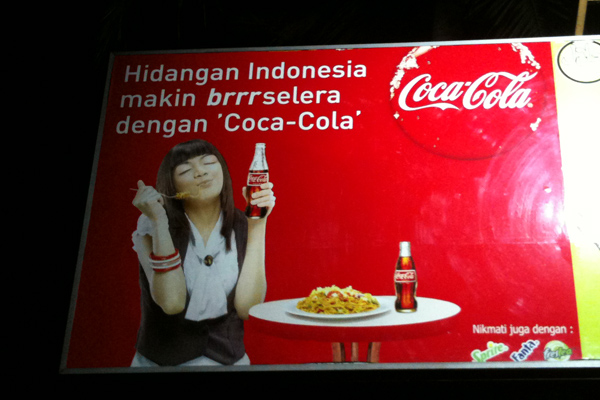
Back to my vacations in my tropical hometown, a point-and-shoot camera in hand, I snapped pictures of advertising billboards which I thought were very Indonesian. I never put much thought on why I thought they were very Indonesian, but there is something straightforward about the messages on these advertisings. An Air Conditioner ad reads “Satisfieeeeed with the savings, the cold breeze is reaaaaaly nice.” This, paired with a picture of a bizarre guy wrapped in all-white winter jacket, gloves, and snowcap. Another ad reads “Indonesian food is taaaastier with ‘Coca-Cola’,” which appears to be the tagline for this worldwide soft drink brand.
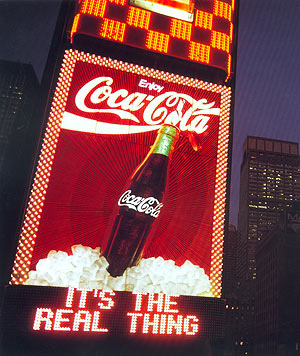
When I returned to New York, I wen to Time Square to see the bright billboards there. I was sure that a brand like Coke would have a prime advertising spot there, and I was right http://www.mywindpowersystem.com/2009/06/coca-cola’s-wind-powers-ny-bill-boards/ . I was dumbfounded by how this compares to the Coke billboard in Bandung. It also happens to be powered by green energy.
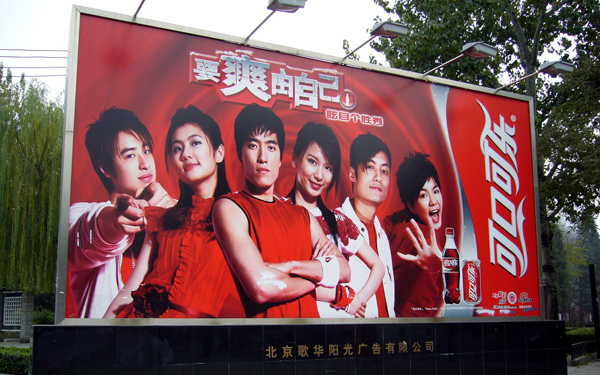
To satisfy my curiosity, I started googling for Coke billboards in other countries and found an interesting article about how companies need to localize their brand so it can be accepted by the people. http://www.namedevelopment.com/blog/archives/2007/06/your_brand_name_1.html
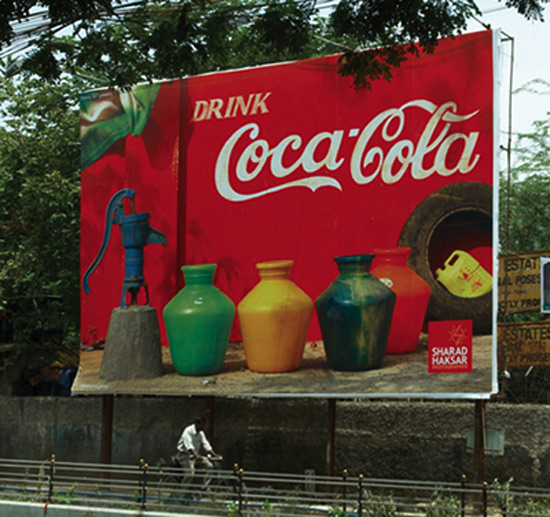
Another interesting finding: In India, the controversial Coke billboard is commendable because of its transparency, using a photograph of hand-drawn Coca-Cola symbol found everywhere in India as the main graphic. http://www.designboom.com/weblog/cat/11/view/7902/business-heads-by-indian-photographer-sharad-haksar.html
It’s interesting to see how an international brand like Coke was adapted in different countries. It made me think about where things went wrong in the brand localization process that the billboards in Bandung felt like they were designed 20 years ago, overly simplistic and—dare I say—lack ideas, sophistication and intelligence? Is this really what’s fitting for Indonesian consumers?
Often I spend a lot of time listening to the clients’ goals and contemplating them. We, graphic designers, are after all, problem solvers. In order to do our job, we must become true collaborators, working with the client, educating them of the upcoming trend, the potential pitfalls in their marketing schemes, all done from the point of view of a design executor.
Graphic design is not about making pretty pictures, it’s about being the catalyst of change.
“We must become the change we wish to see”
—Mahatma Ghandi
.
. . .
 John Kudos
John Kudos
Desainer Grafis menetap di New York
.
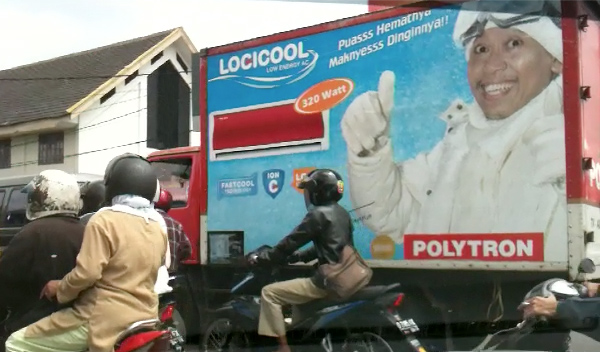

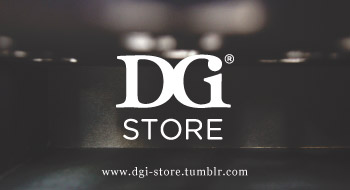


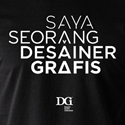





 1. Nirmana: Elemen-elemen Seni dan Desain | Sadjiman Ebdi Sanyoto
1. Nirmana: Elemen-elemen Seni dan Desain | Sadjiman Ebdi Sanyoto 2. Desain Komunikasi Visual Terpadu | Yongky Safanayong
2. Desain Komunikasi Visual Terpadu | Yongky Safanayong 3. Hurufontipografi | Surianto Rustan
3. Hurufontipografi | Surianto Rustan www.underconsideration.com
www.underconsideration.com

“picture of a bizarre guy wrapped in all-white winter jacket, gloves, and snowcap” >> FYI itu mas tukul arwana mas, salah satu komedian terbaik indonesia hehehehe…
hi Identity and lenticular business card for Sideshow project is the best!
Identity and lenticular business card for Sideshow project is the best!
jadi brrrselera pengen beli cocacola…
konsep glokalisasi (glocalization) ini memang sepertinya mewabah di mana2. sedikit komentar soal adaptasi design di indonesia, pendapat saya :
1. coke case: coca cola sebetulnya panik dengan kelihaian teh botol sosro dalam mengemas konsep “apa aja makanannya, minumnya teh botol sosro”, sehingga kemudian pengelola brand lokal merasa lebih confident dengan menyerang balik dgn konsep yang sama ketimbang meresikokan dirinya membuat konsep baru. ini yg saya perhatikan.
2. masih coke case : pemikiran aji mumpung. coba perhatiin billboard coca cola di indonesia di bagian sisi kanan bawah. mumpung ada budget pasang billboard, pasangin juga brand2 lainnya, dengan statement yg menurut saya sangat tidak fokkus, yaitu “nikmati juga dengan…” yg muncul di benak saya, mana coba yg lebih brrselera nemenin makanan anda? ada 4 pilihan toh? bandingkan sendiri dgn teh botol sosro yg sharp-focused.
3. over all : metode high involvement to low involvement. banyak pemilik brand yang berusaha menurunkan level involvement-nya agar terjadi rapid selling in short time. seperti contoh polytron. produk AC sebetulnya kategori high involvement. namun dikomunikasikan dgn menggunakan Tukul (agree dgn reactivator, no. 1 comedian in Indonesia) secara sederhana, agar calon pembeli “lebih percaya” kepada Tukul, instead of self research dsbnya.
4. over all : it’s a matter of creating perception. maklumlah, mayoritas penduduk Indo hanya dibekali pendidikan yang minim, sehingga cara jualan yang kita cap “tidak indah” seringkali menjadi jalan pintas menggapai target penjualan. tapi walau bagaimanapun, kita masih bisa kok melihat bbrp iklan produk high-end yang soft selling dan indah dipandang.
“Bravo!” dunia design Indonesia
Analisa yg keren dari Ducko Chan
Good post. This article is a good reminder about the importance of focusing your advertising to your target market. thanks.
im sorry for disturbing all of u..
introduce me,im vero papera..im 20 years old.
i live in surabaya<eastjava<indonesia
im new in designing graphic or stuft like that,but from litlle i like art so much..
from 2 years ago,i decide to learnd design graphic,cause i work in fashion store for teenagers..cause of that ,i want know better about designgraphic..
my family,my friends told me that i cant live or rich just from designgraphic.
i will proove to everybody i know that i can live from designgrapic..
i really need more and more advice from everybody in graphic-design-indonesia for me to learn bout designgraphic.
proud to know u all,and im sorry for disturbing u all.
regards,vero papera